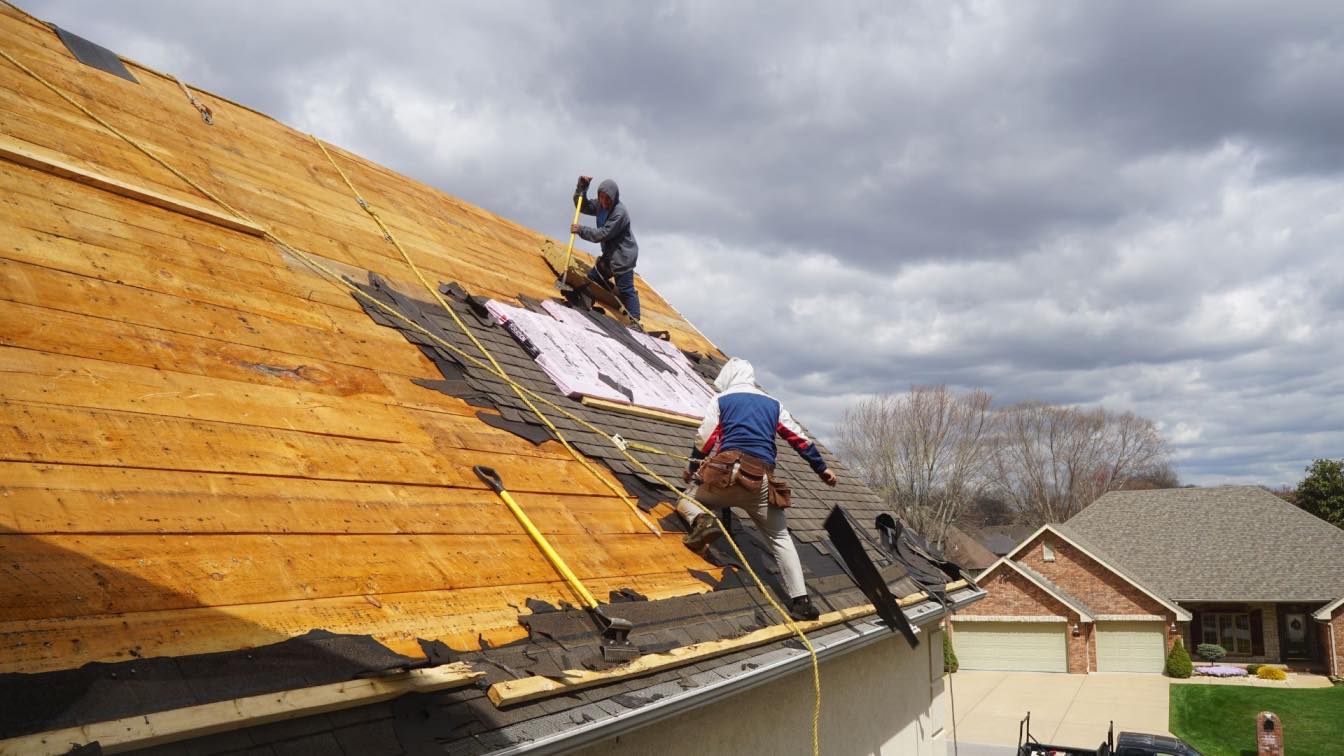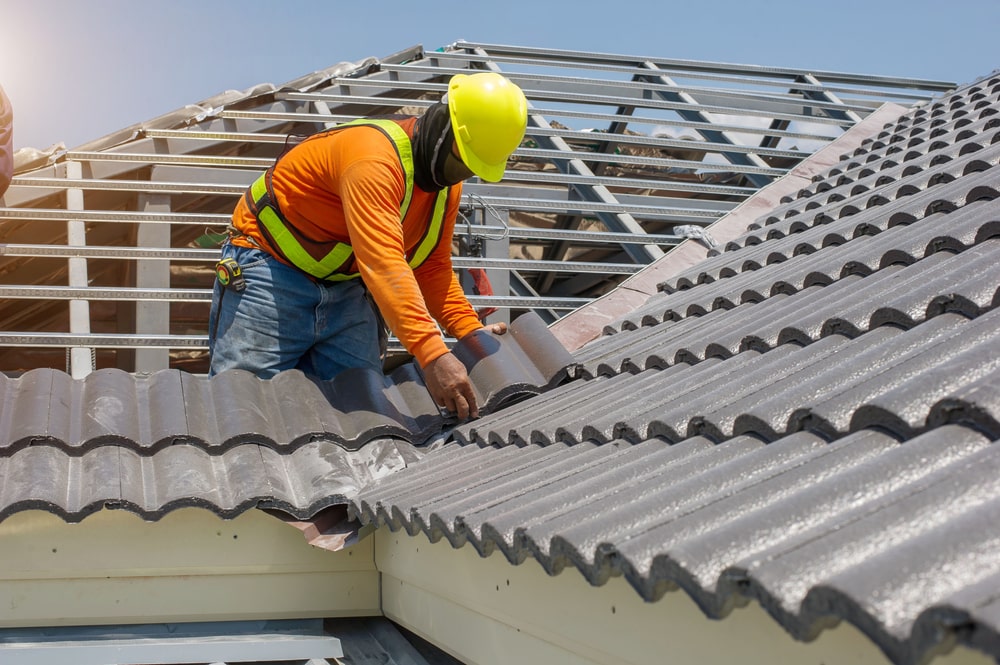Top Experts in Cuyahoga Falls Roof Repairs for Quick and Efficient Service
Top Experts in Cuyahoga Falls Roof Repairs for Quick and Efficient Service
Blog Article
A Comprehensive Overview to Effective Roof Covering Flat Roof Covering Setup
The intricacies of flat roofing installment need a careful technique, starting with a detailed understanding of various flat roof types and the vital products required for optimal performance. An effective installment pivots not just on the selection of products but also on the preparation and execution of each step included in the process.
Comprehending Flat Roof Kind
When thinking about level roofing systems, it is important to understand the various kinds available, as each offers distinct benefits and downsides customized to details requirements. One of the most common kinds of level roofing systems consist of Built-Up Roof (BUR), Changed Asphalt, and Single-Ply membrane layers.
Built-Up Roof covering consists of multiple layers of asphalt and gravel, supplying outstanding toughness and climate resistance. It is particularly useful in locations susceptible to severe climate problems but may need more maintenance due to its intricate building.
Changed Asphalt is a prominent selection for its simplicity of installment and adaptability. It often employs a torch-applied or self-adhesive method, which can be beneficial for fast repair work and long-term performance. Nevertheless, its life-span can be much shorter contrasted to BUR.
Single-Ply membranes, consisting of Thermoplastic Olefin (TPO) and Ethylene Propylene Diene Monomer (EPDM), are recognized for their light-weight nature and energy effectiveness. These materials are commonly liked for business structures due to their cost-effectiveness and ease of installation (Cleveland Roofing Specialists). They may not give the same level of insulation as other choices.
Each roof covering type calls for mindful factor to consider based upon climate, budget plan, and particular job demands.
Necessary Materials for Flat Roofing
A range of vital products are crucial for the successful installment of level roof. The selection of products straight impacts longevity, efficiency, and total performance.
Among the primary products is the roof membrane layer, which can be built from different materials such as polycarbonate polyolefin (TPO), ethylene propylene diene monomer (EPDM), or PVC. Each type supplies special advantages, including UV resistance and versatility, which are essential for long term efficiency.
In addition to the membrane, insulation products play a significant function in power efficiency. Rigid foam boards or polyisocyanurate insulation are preferred selections, as they provide outstanding thermal resistance and dampness management.
In addition, roof covering adhesives and sealers are crucial for guaranteeing a leak-proof setup. These items must be compatible with the picked membrane to avoid deterioration in time.
Planning For Installation
Correct preparation is important for a successful flat roofing setup, as it lays the foundation for a effective and long lasting roof. Begin by carrying out a thorough examination of the existing roofing system structure. Try to find signs of damage, including leakages, rot, or inadequate water drainage, which might endanger the brand-new roof. Make certain that the hidden products are sound and can sustain the weight of the new roof elements.
Next, gather all necessary devices and materials, guaranteeing that they meet market requirements. This includes water-proof membranes, insulation, blinking, and fasteners. Acquaint on your own with the manufacturer's requirements, as adherence to these standards is vital for guarantee functions.
In addition, make sure that the workspace is clear of debris and blockages to assist in efficient and secure setup. Consider weather; prevent setup during heavy rain or severe temperature levels, which can affect material performance. Inform any kind of owners of the structure concerning the upcoming job to make sure safety and lessen disturbances. By taking these preparatory steps, you can enhance the likelihood of an effective level roof covering setup that satisfies both architectural and aesthetic demands.
Step-by-Step Installation Process
With the groundwork developed with comprehensive preparation, the following stage entails carrying out the flat roofing installment methodically. This step is important for maintaining the roof covering's honesty over time.
Following the vapor barrier installation, lay down insulation boards, guaranteeing they fit securely with each other to lessen thermal linking. Protect the insulation with appropriate fasteners based on the roofing type and local building ordinance. Once the insulation is in place, it's time to apply the roofing membrane. Relying on the picked material-- such as TPO, EPDM, or customized bitumen-- install the membrane layer according to the supplier's specs.
Make sure appropriate overlap at sides and joints to create a watertight seal. Make use of adhesives, mechanical fasteners, or heat welding as required. Ultimately, set up flashing around boundaries, vents, and any roof covering infiltrations to boost waterproofing. After installation, conduct a comprehensive examination to recognize any potential concerns before concluding the task, making certain a dependable and durable flat roof system.
Maintenance Tips for Long Life
Regular maintenance is important to ensure the longevity and efficiency of a flat roof. Among the key jobs is to conduct routine evaluations a minimum of twice a year, preferably in spring and loss. During these examinations, search for signs of wear, check out this site such as sores, fractures, or merging water, which can show underlying issues.

Making sure correct water drainage is essential to stop water build-up. Inspect and clear rain gutters, downspouts, and scuppers to assure unobstructed water circulation. Additionally, evaluate seals around vents, skylights, and various other infiltrations for any indications of damage, applying caulk or sealant as needed to preserve a watertight barrier.
Last but not least, take into consideration professional upkeep solutions every couple of years for complete inspections and repairs. By adhering to these upkeep pointers, you Resources can significantly expand the life of your flat roofing system, guaranteeing it continues to be a reliable guard against the components.
Final Thought
Efficient flat roofing installment demands a methodical method including comprehensive assessments, product selection, and thorough prep work. Complying with the outlined actions throughout the setup process makes sure the proper application of roofing membrane layers and insulation while improving waterproofing via effective flashing setup. Moreover, executing regular maintenance methods substantially adds to the long life of the roof. By adhering to these standards, a dependable and sturdy level roof covering option can be achieved, with the ability of holding up against numerous environmental conditions.
The complexities of level roof covering setup need a thorough technique, beginning with a detailed understanding of various flat roofing system types and the essential materials required for optimal efficiency.Correct preparation is essential for a successful flat roofing installation, as it lays the groundwork for a durable and reliable roofing system. After installation, conduct a detailed inspection to identify any potential issues prior to wrapping up the project, making sure a durable and trustworthy level roof covering system.

Report this page